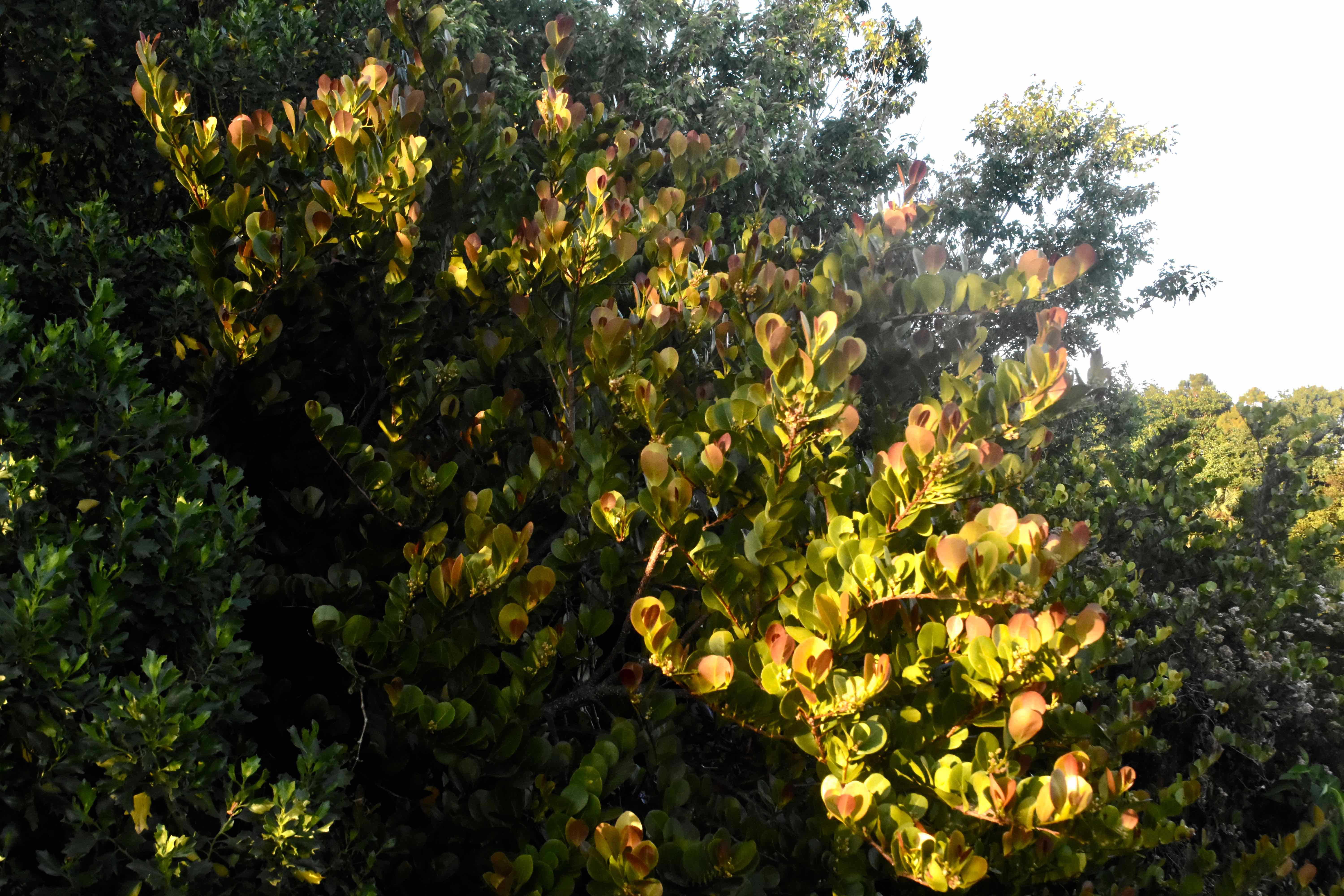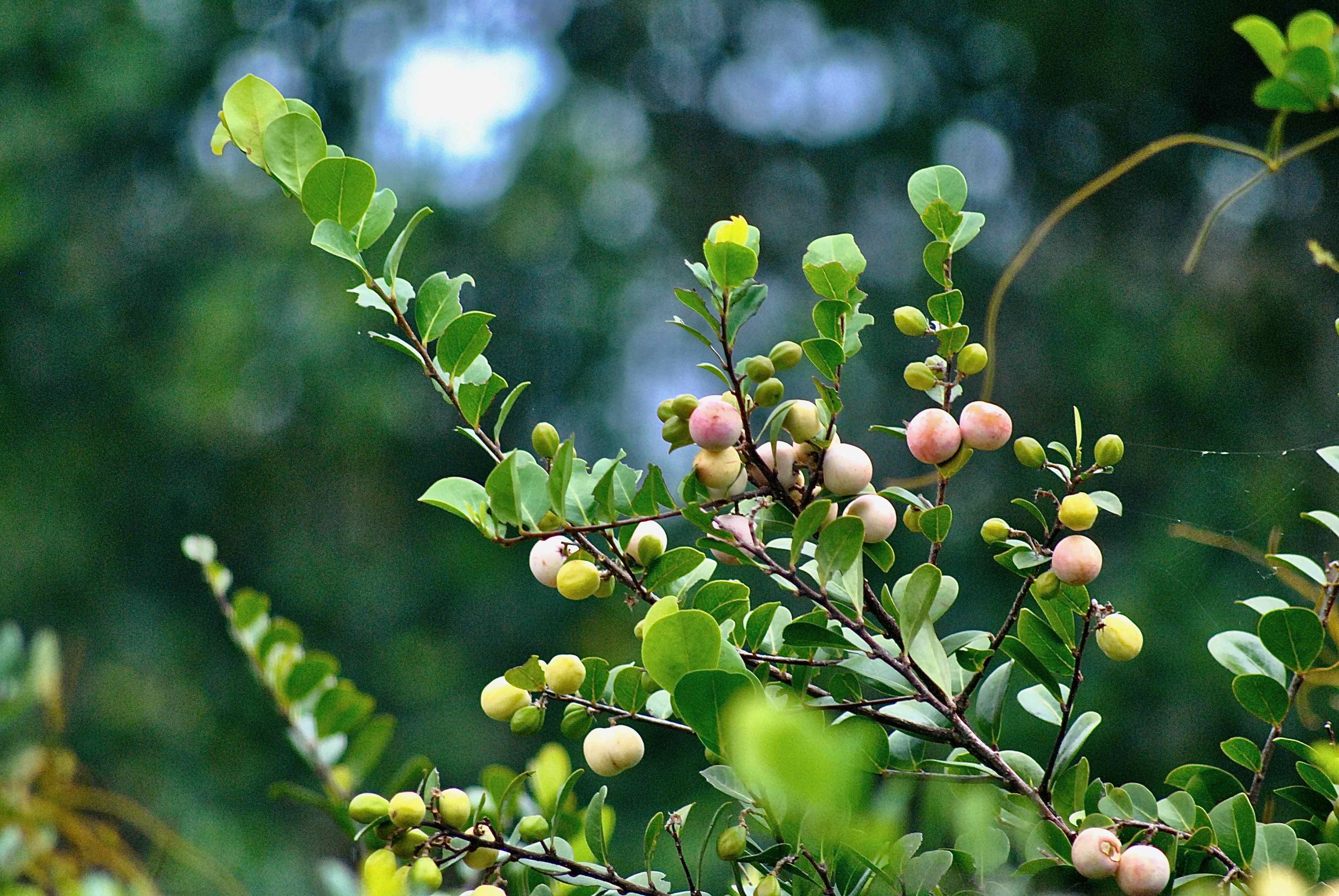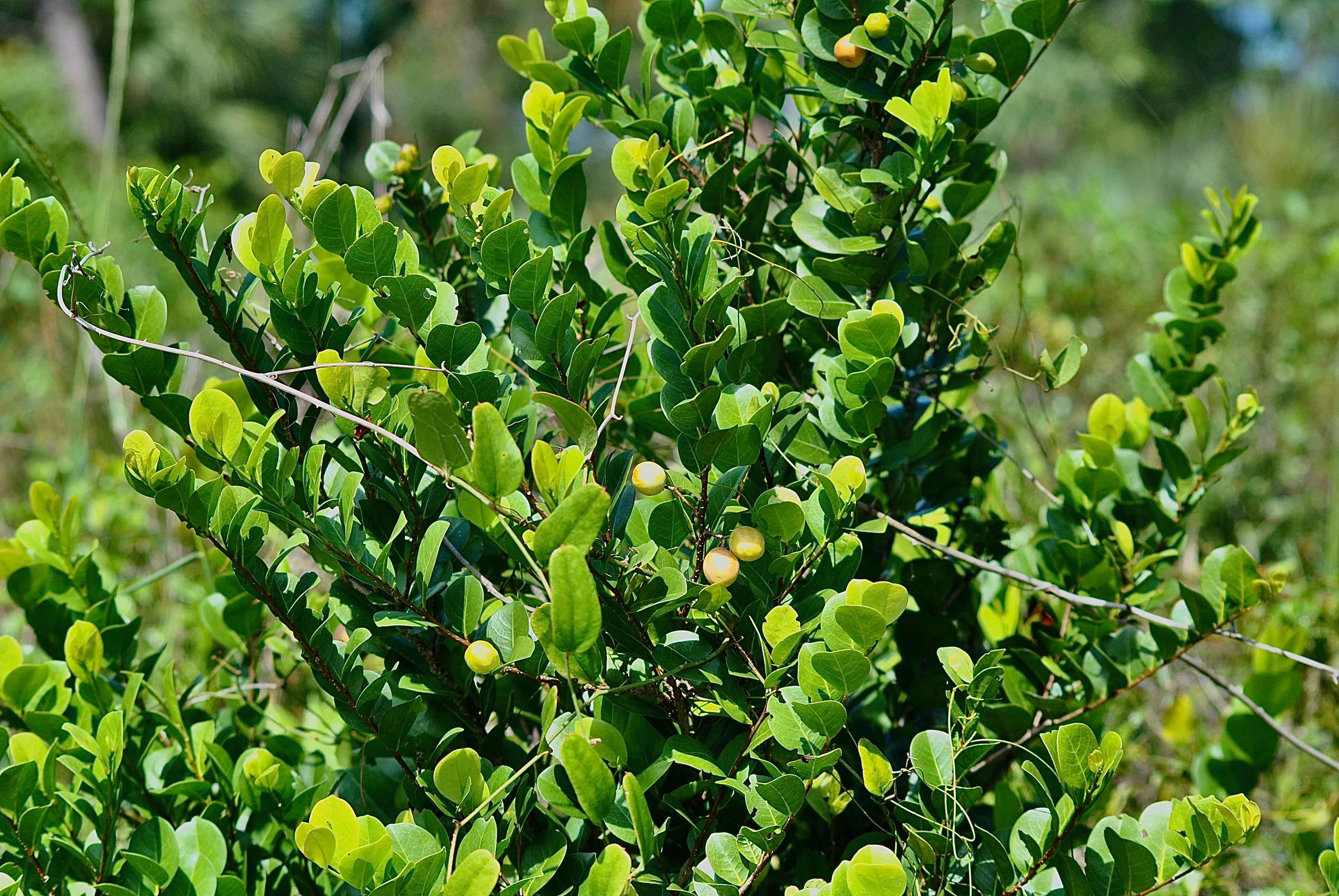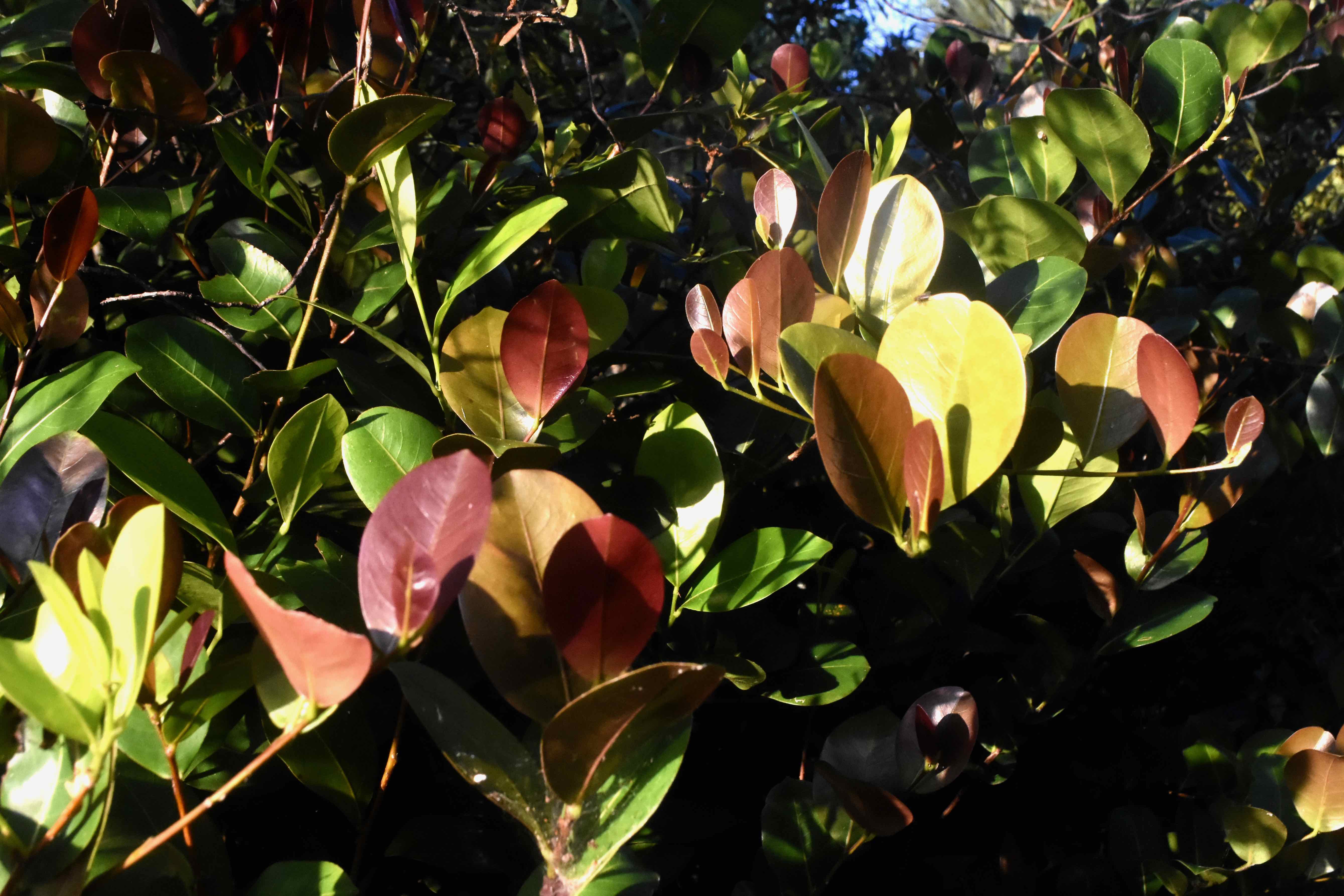
Coco plum, photographed at Green Cay Nature Center, Boynton Beach, Palm Beach County, in April 2021.
Coco plum, Chrysobalanus icaco, is one of the most adaptable native plants in South Florida. It can be found in coastal dunes, scrub, pine flatwoods, the edges of wetlands and on tree islands in the Everglades. And it can be found in the most manicured, landscaped yards and parks.
Coco plum — also spelled cocoplum and coco-plum — can be a tall, sprawling shrub — 10 or 15 feet high and just as wide — when growing inland, or a dense, ground-hugging cover near the beach.
Inland, it can also be a tree, 30 feet tall with a foot-thick trunk. The color of the fruit also can be affected by where it grows — lighter, almost creamy white near the coast; darker, almost black farther inland.
In any case, the fruit is very much edible, although there is some disagreement about its taste and whether lighter or darker varieties are better. We've tried it several times and found it rather meh, more seed than flesh. Coco plum can be eaten right off the plant or cooked; the seeds are large and the skin papery. They can be made into preserves and jellies or canned. In Cuba, it's made into a preserve that's served as a dessert.
Coco plum has been used in traditional medicine for centuries, and researchers have found it does have promise, including the ability to reduce blood sugar in animals with type II diabetes. The Seminoles made a liquor from the wood ash that they used to cleanse the body and strengthen marriages. They also ate the fruit and used the wood to make arrows.
Florida is coco plum's only home among the 50 states, and it's only found as far north as Brevard County. It can be found in Puerto Rico and other Caribbean islands, Mexico and Central America, South America to Brazil, and western Africa. It is cultivated and naturalized in parts of Asia and the Pacific.
The leaves can vary in form but generally are oval-shaped or elliptical, and may have a bit of an indentation at the apex, or tip. They're dark green above, yellow-green below. New growth can show various reds, making for an attractive landscaping plant. They are smooth to the touch, alternate on the stem and the edges are "entire," meaning they're not serrated or lobed. It flowers year round, but mainly in the winter and spring. The flowers are small and white, but appear in clusters, amplifying their visual appeal.
It is widely tolerant of weather extremes, which is another reason why it is attractive to landscapers. But coco plum grows best with partial shade and in an area with limited competition from other plants. It is an important plant for wildlife, providing both food and cover. Its flowers are an important source of food for honeybees.
It is a member of Chrysobalanaceae, the coco plum family.
Seacreast Scrub Natural Area



